The concept behind food and beverage pairings is the matching of flavours to deliver elevated enjoyment of each of the components being consumed.
Pairing wines with your food, however, can be a delicate and daunting process, as a bad pairing can quickly turn you off the entire meal. And yet, wine pairings can certainly get confusing for beginners, especially if the extent of your knowledge is that there are white and red wines.
So when you’re trying to make an impression over an important business dinner or a date, these beginner tips for pairing food and wine will make it easy to find the perfect match, having you sound, feel, and taste like a wine pro in no time.
We All Know a Bit About Pairings
While no one is born with the knowledge of pairings, it’s something that I believe we often unknowingly develop over time.
As a child, you may have been familiar with peanut butter and jelly, French fries and ketchup, and cookies and milk. These are all pairings made from two very different components that work together in precise harmony.
That being said, you’ve got to start somewhere, and as you get older your palate often changes – you start to prefer cabernet and steak over cookies and milk.

The Basics of Food and Wine Pairings
First, let’s cover the simple rules for dining with wine. By having this basic knowledge in your arsenal, you’ll have a smoother time selecting a wine to enjoy with your meal.
Wine tip: Tannins come from contact with the stems, pips, and skins of the grape during the juicing process.
Red Goes with Red
It’s a match made in heaven when you pair red wine with red meat. It’s not because of the colours though.
Red wine is a match for red meat, like steak, because it can soften the proteins in your meaty meal and boost the flavours of the fat. This is due to the presence of tannins, which are abundant in red wines.
Wine tip: Grape juice is inherently white. The colour you see in red wines comes from allowing the red grape skins to sit with the juice. The longer the skins are in contact with the juice, the darker the wine will be.

White Goes with White
White wine is perfect with meals that include fish and chicken. For fish, the acids in the wine help enhance and freshen the taste, similar to squeezing a lemon over seafood. With chicken, white wine bodes best for the white meat portions of the bird.
Consider a dish of chicken piccata with lemony and salty flavours and a lovely white, like a Chardonnay, to help bring the flavours full-circle. But with the dark meat on chicken, something like a Pinot Noir may be better suited.

Matching the Flavours
If you can’t decide which wine might be best suited to the dish you’re ordering, consider how the dish is described. Sweet wines are a match for sweet foods, while acidic foods do best with acidic wines.
Pairing Methods That Never Fail
Still not sure which bottle of wine to order? You can find the right match through the methods of congruent pairings and complementary pairings.
With congruent pairing, your selected food and wine will share several things in common. So, just as a sweet wine is paired with a sweet dish, a full-bodied chardonnay that has a succulent and buttery aftertaste is sublime with a pasta dish of buttery flavours. In other words, they create harmony and continuity.
However, keep in mind that the wine you choose should not be overwhelmed by the flavours on your plate. Should that happen, you’re bound to notice that the wine seems bland.
So, by ensuring harmony with what’s in your wine glass and what’s on your plate, these flavours can optimally enhance one another.
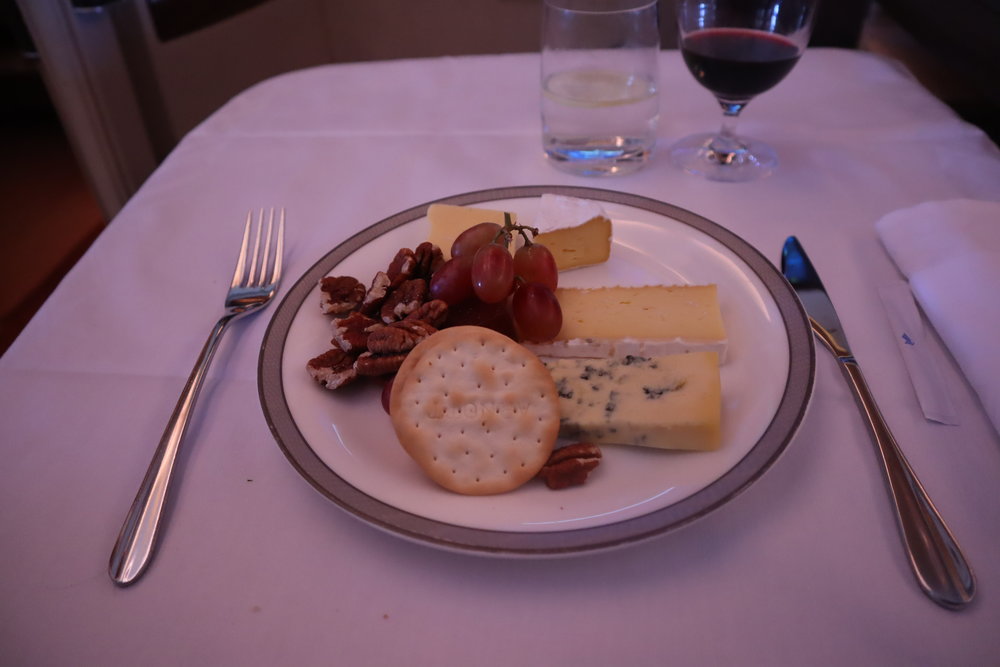
With complementary pairings, the food and wine you choose don’t have shared flavours, but still complement one another. They contrast but balance in the most splendid of ways.
For example, a spicy dish paired with a sweeter white wine brings balance and harmony on the palate. White wine is also lovely in this way for salty dishes, helping tame the flavours while the saltiness mellows out the wine’s sweetness, letting the fruity flavours and aromas shine.
Wine tip: Chardonnay gets its distinct buttery flavours from a process called malolactic fermentation.
How Food Flavour Profiles Help You Choose Your Wine
Generally speaking, if you stick to red wines with red meats, white wines with white meats, and try to pair flavours based on how they compare and contrast with one another, the pairing will usually work in your favor.
Another great method for wine pairing is to think of the food flavour profiles we often encounter when dining. These can help you pinpoint a more precise pairing that will elevate the enjoyment of your meal.
Salty
While salt is used in most food preparations, some ingredients tend to give off more of a salty vibe. Think fried foods, potatoes, or even pasta sauces.
Salt impacts the way wines taste, so if you know you’re ordering something that’s on the salty side, any acidic wine or a sparkling wine will be a nice match. The acidity in the wine creates balance, and that salty taste brings out the fruitiness that you’ll adoringly sip from your glass of white wine.
Personally, I find guilty pleasure in a glass of Champagne and a salty bowl of French fries when out for Sunday brunch.

Acidic
There are many acidic wines and foods, so it’s possible to make both congruent and complementary pairings here. Acidity lends a freshness to your meal, though when pairing, the wine should be at least as acidic as the food you choose – or you’ll think it’s bland when you taste it.
Salad dressings are a prime example of an acidic flavour. Should you be pairing for each course, forget what’s in your salad, and think of the salad dressing.
Wine tip: Sauvignon Blanc is fairly fail-safe when pairing with acidic dressings, though most white wines will do.
Fatty
There are no fatty wines, so to pair wine with fatty foods, you need to go with a complementary style of pairing.
Tannins are ideal for this, so bold reds are usually a solid match here: the bitterness of the tannins can help soften the fats in your meats and bring out their flavours.
Wine tip: Want to have a better understanding of what tannins are? The next time you steep a cup of black tea, squeeze the remaining liquid out of the teabag and taste it.
You will notice that your gums “pucker up”, leaving your mouth feeling like it is dry. That’s what the effect of tannins.
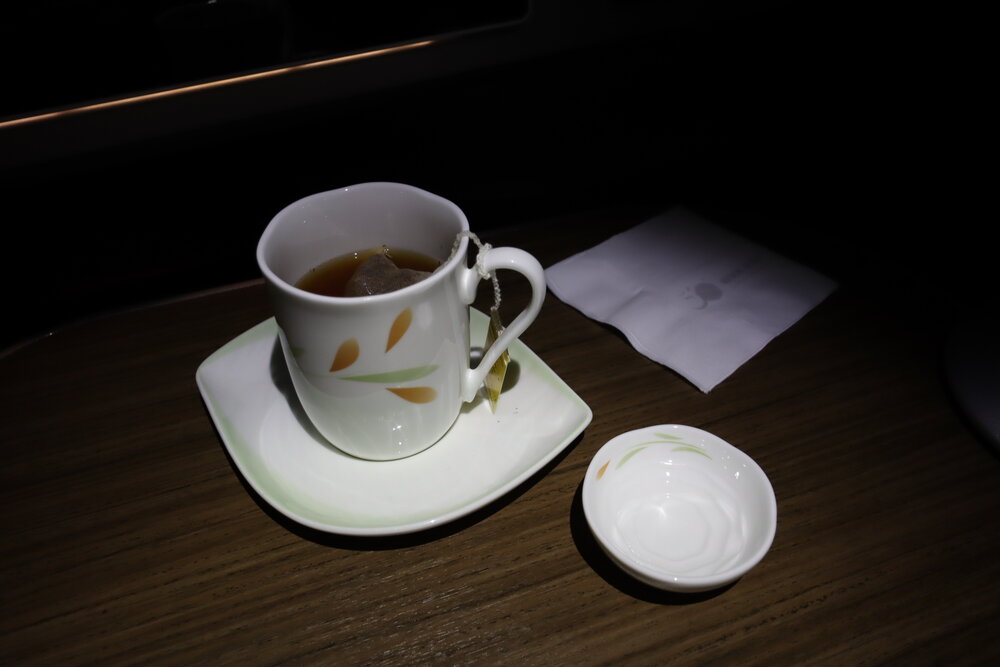
Bitter
One pairing you should never make with food and wine is congruent pairings of bitter items. Two bitter items will only result in more bitter flavours.
When you have a bitter dish, acidic wines are going to give it that measured balance it needs to create bliss on your palate. Think Zinfandel or a dry Riesling.
Sweet
We’ve already discussed that sweet foods and sweet wines are a match. However, you must choose a wine that is sweeter than your dessert, or else your wine will lack flavour because the dessert will overpower it.
Make sure you never pair any sweet foods with wines that contain high levels of tannins for the best dessert pairings.

Spicy
Some of the most fun you’ll ever have with wine pairing comes with spicy foods. While they are quite complex, you can pair in both congruent and complementary ways.
Spicy foods should increase the bitterness and acidity, while minimizing the body and sweetness. Therefore, lighter wines with a touch of sweetness and fruitiness are ideal for spicy meals.
Choosing Wines In Flight
So, how does this newfound knowledge of wine pairing translate when you’re flying at 35,000 feet? Some of the best airlines in the world have immaculate dining options in First Class and business class seating, along with a beverage program to match.
This means you can test out your wine pairing skills while being whisked away to faraway lands.
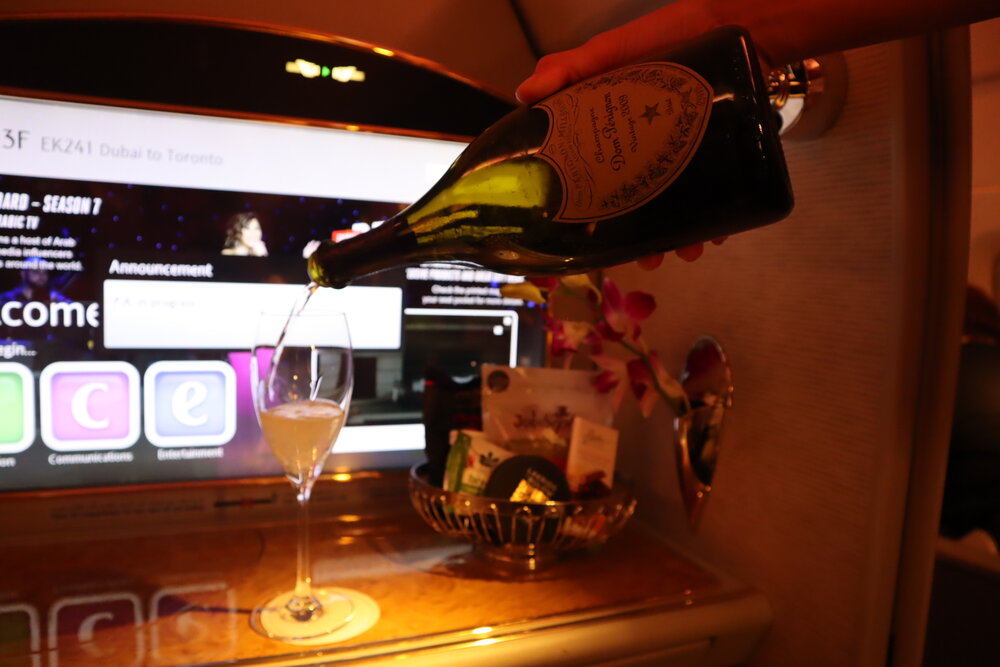
If you fly Emirates First Class, you’ll have the option of caviar and Dom Perignon Champagne, which is certainly a lovely match. If you’re not feeling up to the bubbly, an unoaked Chardonnay will work too.
Wine tip: Most oaked chardonnays come from California, and while it’s not a sure-fire way of determining whether the wine has been oaked or not, it’s a suitable guideline to follow.
Should you select a tenderloin of beef, remember the rule about choosing a red that’s high in tannins. This will elevate the flavour experience every time.
Choosing a fish dish, such as pan-seared rainbow trout, will never fail with an unoaked Chardonnay. But when you have something fattier like salmon, you’re better off with a lighter red, like Pinot Noir. If you prefer white wines, make it an oaky style of Chardonnay.
When flying with Japanese airlines, the luxurious food and wine program that awaits First Class travellers is one of the best around. You will find selections of wine and sake to match your meal.
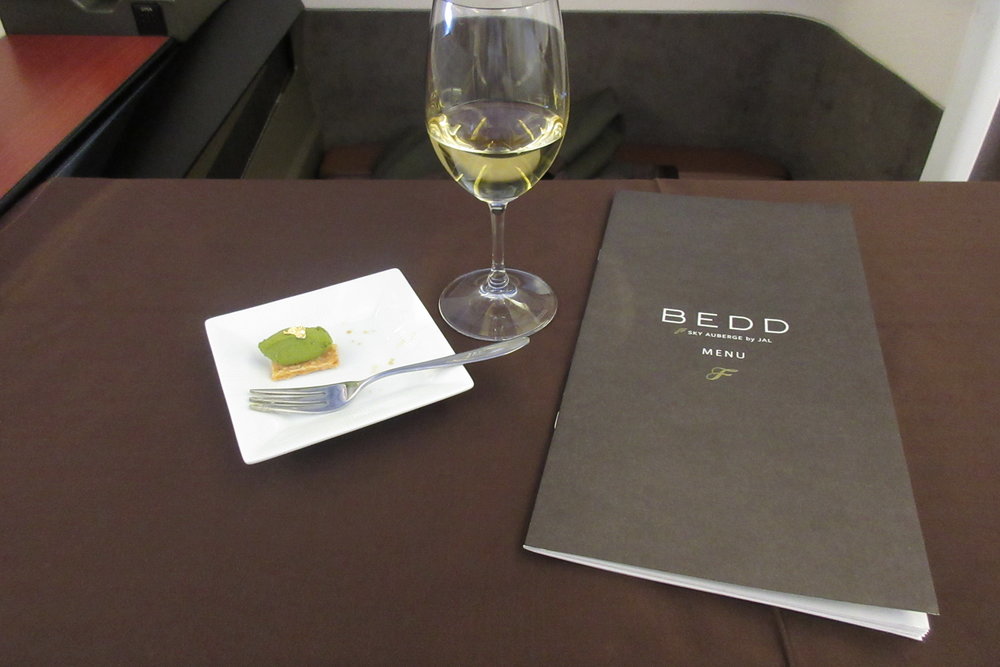
However, it’s likely that some of the chef creations will feature raw selections, including sushi and sashimi. Even the most seasoned wine drinker can be confused about how to handle this pairing.
When you have lighter-coloured fish, stay true to colour and go with a light-bodied white wine. Surprisingly, a dry Riesling will work wonders here, though anything that is spicy is best with an off-dry version, because the sweetness will be complementary.
For rolls or a variety of types of fish in your sushi dishes, a brightly acidic and dry rosé can bring it all together. This is especially the case when you have something that includes several types of seafood in one bite, like a roll with tuna, salmon, and crab, as this type of wine brings out the best.
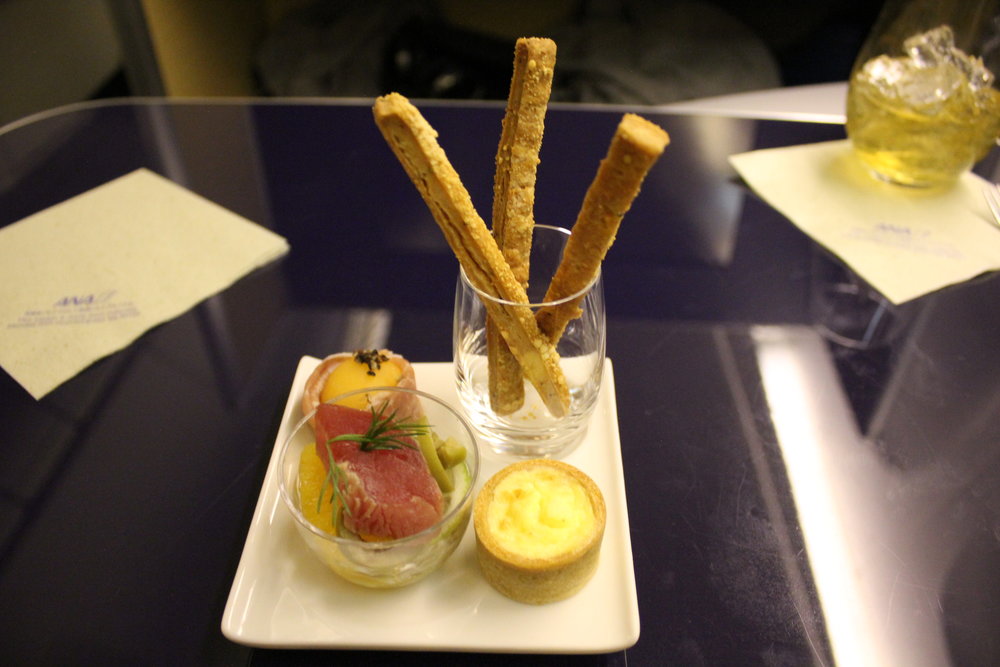
If you do prefer reds to whites, you can still enjoy it properly with sushi. Sticking to something with mild tannins and a light body, such as a Pinot Noir, is the best choice. Anything stronger will create an unpleasant metallic finish in your mouth with each sip.
Wine tip: Pinot Noirs are primarily grown in cooler climates. This is due to its thin skin, which would otherwise burst in a warmer climate. These thin skins contain less tannins and pigment, making the wine a lighter shade of red and not weigh so heavily on your palate.
Conclusion
When it comes to expertly pairing wine with food, there are some golden rules to follow that will help you have a better dining experience. Both on the ground and up in the air, it’s important to remember them as a general guide, though the best advice is to go with what you like.
I will admit that this article is just scratching the surface on the topic of wine pairings. In order to build a greater understanding, you’ll need to begin experimenting with how various foods and wines combine on your own palate.
By tasting various wine styles with your favourite foods while incorporating the optimal pairing guidelines, you’re sure to find a combination you love everywhere you go.


